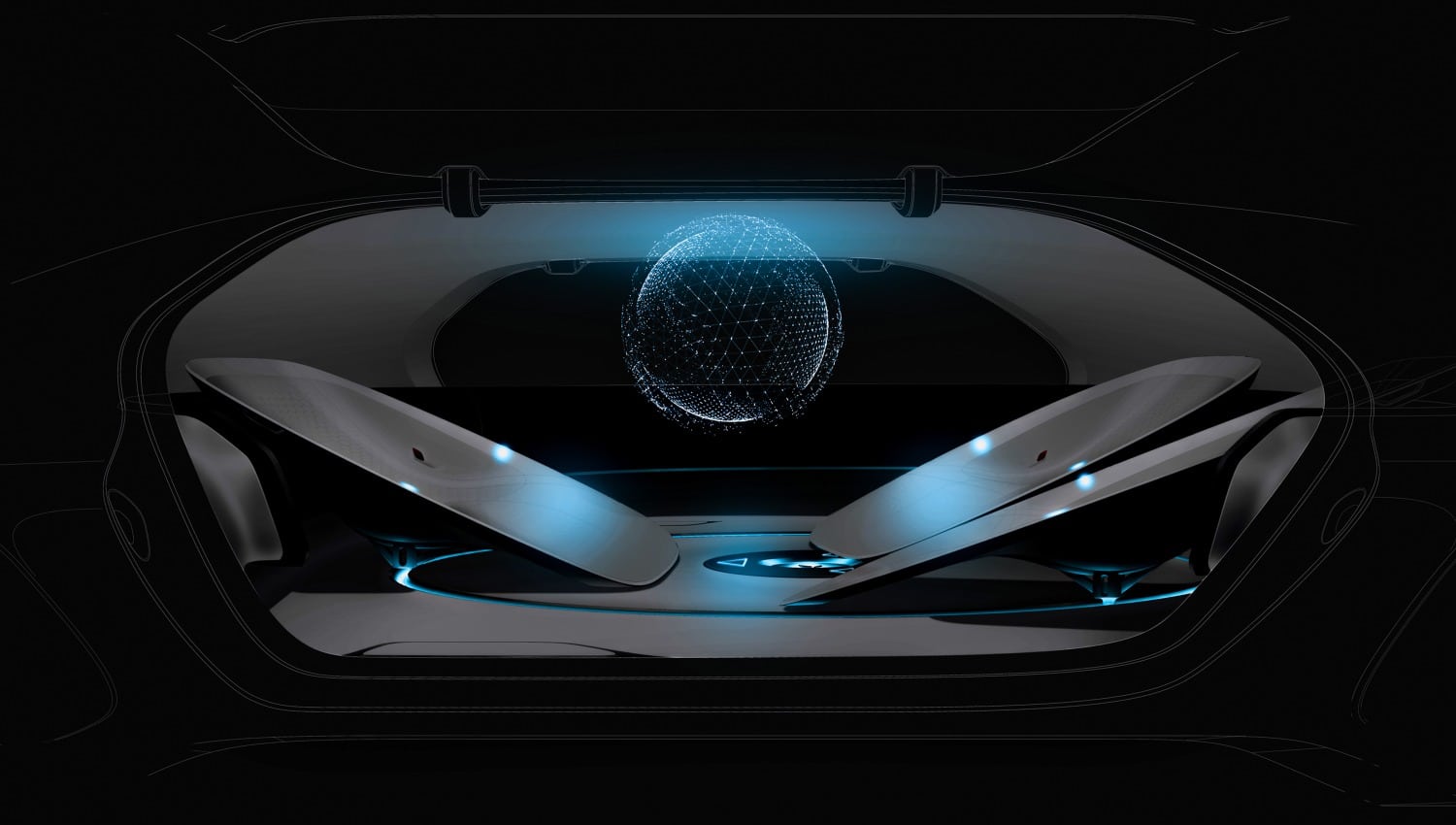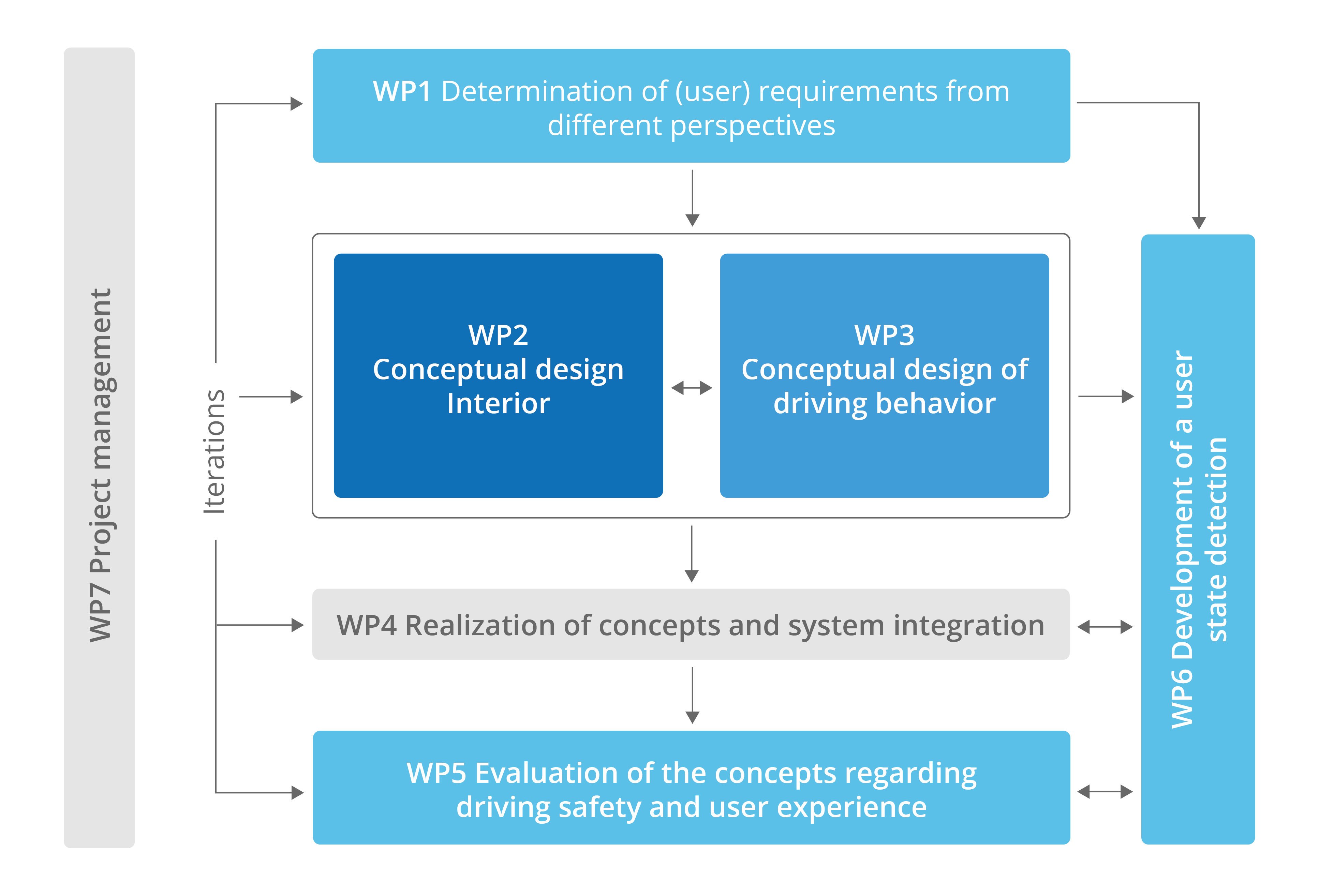Work package 2
Development of new vehicle interior concepts
Copyright studiokurbos
The concept design process is an iterative process that includes evaluation by users. The researchers first develop multiple concept approaches and then use RAMSIS analyses to evaluate them in terms of static comfort and convenience (gripping/reach ranges, fields of vision, convenient/comfortable angles). The concepts are subsequently implemented in virtual reality environments and in real structures for user studies. The development process converges new HMI concepts, new controls, and new seat/sitting positions. Through integration in a complete, innovative interior concept, the interplay between these components is examined and evaluated with respect to increased occupant comfort – especially in terms of users’ perception of the interior and feeling of safety.
New control options will emerge in the vehicle interior not only with regard to primary vehicle control but also for all other interactions with the vehicle and infotainment system. Substitution of customary controls, like the steering wheel and pedals, will create new freedoms for the development of new interior concepts. Likewise, with new seat/sitting positions and passenger activities, novel control layouts will be possible that diverge from conventional instrumentation placement. Besides the input from the requirements analysis in WP1, dynamic information about the driver’s current condition as well as the driver’s persistent characteristics and attributes are important for the development of new ways of human-machine interaction. Driver condition monitoring (based on, among other things, information from WP6) allows smart decisions to be made about which HMI output should be presented to the driver and when. The HMI concepts are created based on an examination of the interaction between the HMI for infotainment, the HMI for driving functions and automation, and the motion HMI in close cooperation with WP3.
Work package objective:
The goal is an innovative, holistic interior concept for fully automated passenger cars and commercial vehicles that is appropriate for the defined usage scenarios and anticipated driving activities in the future. The full automation of the vehicle opens up possibilities for new seat/sitting positions and occupant postures. The goal of the concept development is to make the best possible use of these new opportunities in the interests of the user experience and users’ sense of safety. For the interior design, the intention is to specifically use new types of display and control concepts for the infotainment system, driving functions, and automation as well as adaptive, personalizable, modularizable elements in order to present the user with the necessary, confidence-instilling information and functions in the vehicle in an optimal and highly adapted way. The concept design is based on the requirements related to ergonomics, usability, and the user experience, with the general aim being to achieve an increase in occupant comfort, especially through ambience and a feeling of safety. This is also made possible by, among other things, a coordinated transfer of the vehicle condition and driver status (from WP3) into the interior to increase overall occupant comfort and sense of safety. Owing to the complexity, however, this is only implemented for passenger cars.
Work package 1
Ascertaining the overall requirements and user requirements
Work package 4
Concept realization and system integration
Work package 2
Development of new vehicle interior concepts
Work package 5
Evaluation of the concepts in terms of driving safety and user experience
Work package 3
Developing concepts for ride characteristics
Work package 6
Development of a user condition monitoring system


